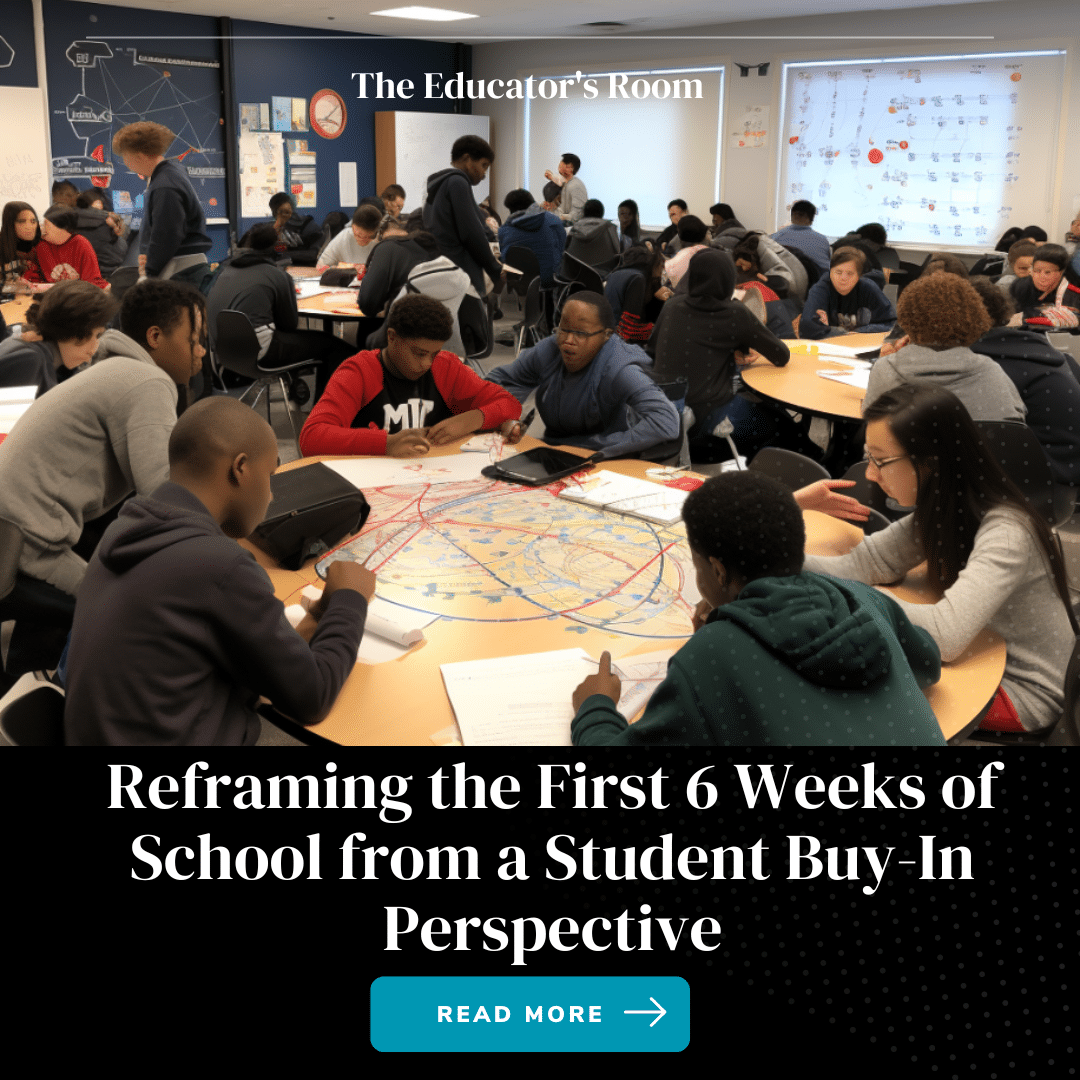Years ago, as an education major, I took copious notes on the importance of “the first six weeks of school” to increase student buy-in. There are even entire books written on the weight these initial weeks carry. As a hopeful, fresh-faced 21-year-old, I fully bought into the magical school year one could have if you set yourself up for success in the first six weeks.
So how was I told to go about creating a magical 6-week period? Routines. Behavior management. High expectations. I fully believe in the importance of all three of these things, but after a particularly tough class last fall, I had to reframe how I approached the first six weeks of school using a new mindset: student buy-in.
Reframing the First 6 Weeks of School from a Student Buy-In Perspective Click To Tweet
As the new year approaches (don’t worry, it’s still summer!), this reframe could be helpful to ensure all students are set up for a successful year in the classroom.
In my first four years of teaching, I followed the typical first 6-weeks protocol. We practiced lining up. Then we practiced again. We patted ourselves on the back for how well we did during a quiet transition. We talked about grade-level work. We learned indoor and outdoor voices. We wrote a class contract that we all signed with fresh, beginning-of-the-year markers and built a strong classroom community. And this worked well! I felt like I was good at this. Our class buzzed with routine and productivity by mid-October, and my time was spent on teaching instead of on classroom management.
Student Buy-In v. Larger Class
Then, the fall of 2022 hit. I had a larger class than I’d ever had before. I was in a new school that really emphasized ‘high expectations’ from day one. However, my class did not want to practice routines. They did not want to attempt any work, and they did not want to create a class contract.
Many students did not want to do this so vehemently that they eloped, destroyed property, and hurled cursed insults at me and other students. Some students were processing so much personal trauma that they started and ended the day in tears at their desks.
Then, three weeks in, an admin email arrived in my inbox with bright fonts and celebratory GIFs. It said things like, “You’re halfway through the first six weeks!” “Keep the fire burning high!” “Energy on 100!” The dancing pug GIFs juxtaposed with the reminder that I was 50% through these integral weeks while the room felt like a mess brought me to tears. So I had to reframe with a new mindset: student buy-in.
Focusing on Student Buy-In
We did not practice lining up the following day until we ‘got it right.’ Instead, we played math bingo for the first 30 minutes of the day. It was not rigorous; it was not intense; it was not perfectly aligned to the day’s standards. But it was fun. Then we did a 10-minute math worksheet as a class. I used the document camera so that everyone could follow along. I put a smiley face on every single paper, even those that had not even written their name, let alone attempted a problem.
To line up, we did not practice pushing our chairs in and making a straight line. Instead, each student had to beat me in rock-paper-scissors to line up. We laughed loudly, the line was a mess, and we were five minutes late to lunch. But, miraculously, it was our quietest hallway transition yet.
The rest of the week followed the same pattern, with about 15 to 20 minutes more of “work” each day. In week five, we did half the math worksheet together, and half the math worksheet independently, and nobody tried to leave the room or flip their desk.
I still had logical consequences for significant behaviors, but I tried to forgive as much as possible. If a student colored on their desk for the first 40 minutes of writing but wrote three words in the last five minutes, we called it a win and sent a picture home.
We were not perfect by mid-October, but the tears, shouts, and runs down the hallway had gone way down. And I was happier. I did not dread walking in the door each morning. By mid-December, things were good. Students were working hard all day and attempting challenging work without a fight. Students could handle a re-do by spring if we needed to tighten up a routine. We never mastered quiet transitions, but you win and lose some.
Students Feeling Welcome
I now believe that the number one priority in the first six weeks of school is not that students know my “expectations” but that students feel happy, safe, and welcome in our classroom. Sometimes that will mean re-calibrating your personal expectations. Sometimes that will mean reducing the rigor of the academic work so that students actually feel successful instead of overwhelmed. My priority is now that students “buy in” to being part of our classroom. No amount of time off recess, silent lunch, or calls home will force a tough cookie into the classroom, so they need to want to be part of the class.
I also realized that six weeks would not determine when class harmony is reached for some tough classes. Some years it will look more like 12 weeks, plus many resets throughout the spring.
What Works for My Classroom
My examples of math bingo and rock-paper-scissors are just examples of things that work for me and my personality. For you, it might look like a morning dance party, silly read-aloud, or free draw time. What I hope this share is that “going easy” on stuff in September does not mean the class will walk all over you. Sometimes, it is required to ensure that students will be active participants in the classroom.
Especially for older students, children can carry so much classroom trauma when they arrive in your room that they have branded themselves as someone who does not belong at a desk. Incorporating fun and reducing academic stress helps send a message that every child in the room belongs there and feels comfortable. Once students feel capable in the classroom, you can actually start to attempt academic work without a meltdown, and let’s be honest, none of us got into teaching for the tantrums.

Susannah Ramirez-Valdez has been teaching full-time in elementary classrooms since 2018, and she has a dual-degree in elementary and special education. She most enjoys working in inclusion classrooms and teaching with paraeducators and special education teachers. She is the daughter of two teachers, so teaching is in her blood! She wants every student to primarily feel safe, loved, and successful in the classroom. One of her favorite parts of teaching is watching students grow into confident readers.







